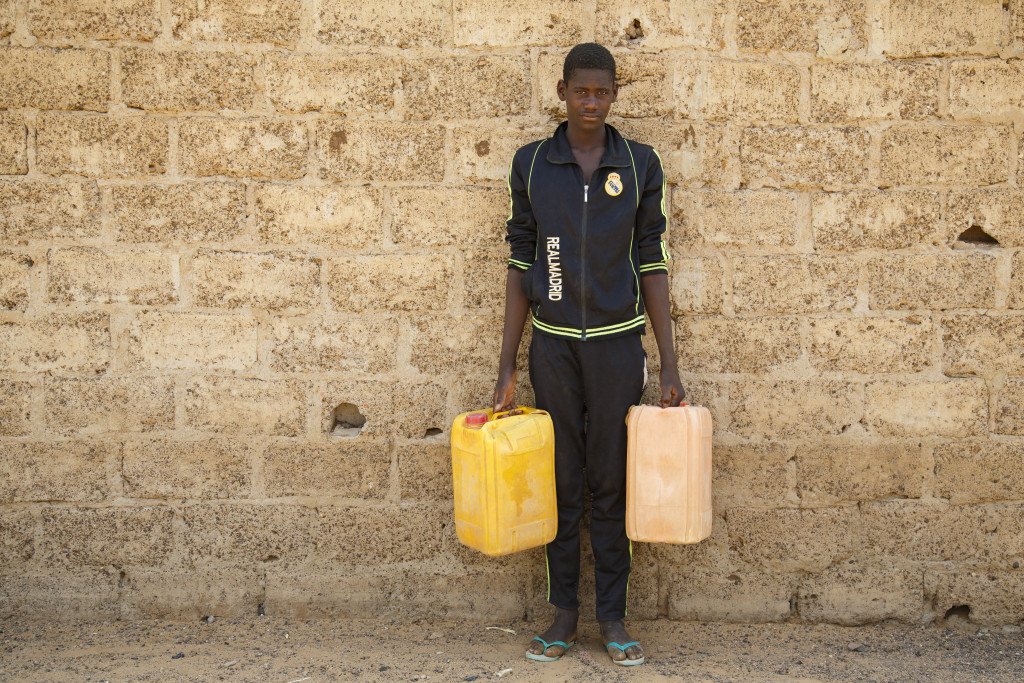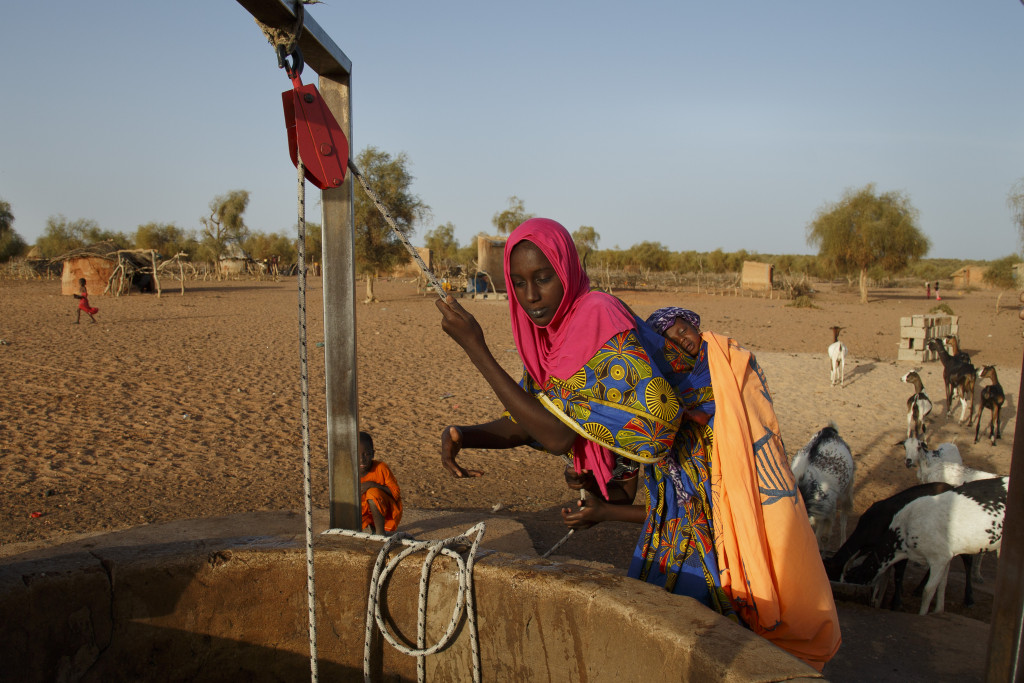Brakna region, Mauritania
In collaboration with

From the 1st November 2017 to the 1st November 2018
In 250 homes, we distributed a hygiene kit with chlorine for treating household water, soap for hand washing, a container to store water and washing powder. We provide hygiene training sessions.
Objectives
- Improve access and therefore the nutritional status of children under 5 years of age.
- To reduce child malnutrition through the improvement of the access to water, sanitation and hygiene.
Beneficiaries
1,500 direct
43,928 indirect
The total estimated population of Maal and Djellewar in 2017 scattered over 124 small villages

On the ground
Lack of access to clean water and sanitation causes a high prevalence of diseases in one of the poorest regions of Mauritania.
The Brakna region has been classified by the “2014 Permanent survey on household living conditions” in the category 4 of the poorest regions of Mauritania with a poverty rate above 40%.
The lack of access to drinking water, sanitation and adequate hygiene practices is related to the transmission of diseases such as diarrhoea or malaria, which worsen the nutritional status of children, making them more vulnerable to malnutrition.
Those vulnerable families affected by recurrent crisis, stress seasons and other aggravating factors find themselves inside a vicious circle of food insecurity, malnutrition and poverty.
According to the data of the General Registry of enquiries of the department of Aleg, the prevalence of diarrhoea in Maal and Djellewar reached 21%. From August to October 2016, 46% of the enquiries of children under the age of 5 in health stations were linked to diarrhoea. According to the latest surveys of Save the Children, 26% of the households have access to water from unprotected wells and 65% do not treat water before drinking it.
During the previous awareness campaigns, 62% of the participants justified the use of water from unsafe sources by reason of the non-free nature and price of water, the distance to the water source and the lack of access to treatment products.

In detail
250 households defined as “very poor” will receive a hygiene kit including chlorine for the domestic treatment of water, soap to promote the washing of hands, a container to store water and powder detergent, used for general cleaningin the area.
The distribution of kits is always accompanied by sessions to explain how to use the distributed products. A monitoring system of the distributed kits will be set up with the aim of monitoring the use of the kits and the change in hygiene practices after the distribution. To this effect, a survey will be carried out among the beneficiary families after the distribution.
The aim is to work with a participatory approach to promote the transparency in the selection of beneficiaries and the strengthening of the community through the use of communal committees, local civil servants and the decentralised state services.
The intended method of implementation consists of an identification process that will evaluate the needs of specific groups (disabled people, widowers, elderlies). Electronic identification cards will be distributed to all household heads, including a barcode and photograph. The distribution methods will be established after consulting with the communities in an integral process that will be clearly explained.
What will be the social impact of the project?
The impact of this intervention is the reduction of the transmission of diseases through water, sanitation or inadequate hygiene practices, mainly diarrhoea. Recurrent diarrhoea in children under the age of 5 weakens their immune system and reduces the absorption of nutrients, making them more vulnerable to malnutrition and other infectious diseases.
Malnutrition in a child’s early years has irreversible consequences in the cognitive and motor development of babies, whose impact will be reduced thanks to this intervention. This developmental delay condemns these children to poorer health in adulthood and to less opportunities of a social and economic development. In the case of girls, if this deficient nutritional state becomes chronic, it will affect their future sons and daughters.
The concepts of nutrition and resilience are closely linked: nutrition is at the same time a determining factor and a result of the reinforcement of resilience. The reduction of malnutrition through the improvement of the access to drinking water and hygiene practices is essential for the reinforcement of resilience because if individuals are better fed they have better health, they can work and are in a better physical condition. For this reason, those households with a better nutritional security are more able to resist, endure for longer and recover more rapidly in times of crisis.


